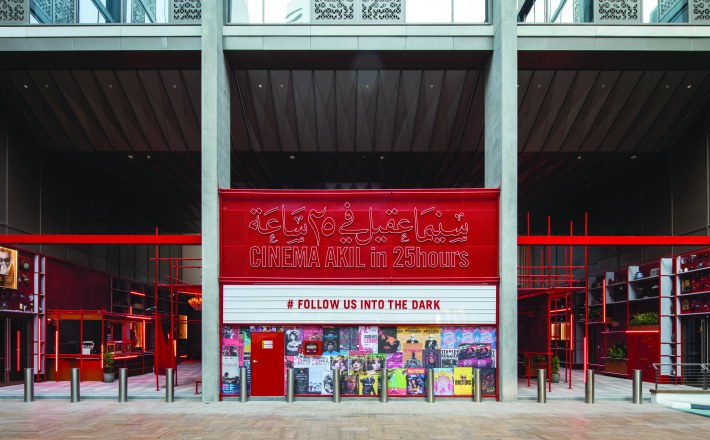Art for the Masses
Companion looks at three very different street artists and finds out what inspires them to transform a blank public space into something meaningful
Over the past 50 years, street art has become a global phenomenon, winning over ever more followers with its colourful and characterful images full of humour and humanity. From its roots in illegal graffiti, it has evolved into an urban art form that is often unsanctioned but welcomed, or even commissioned to make a neighbourhood safer and more appealing.

In recent years, it has resurfaced in galleries and auction houses. By definition, though, it belongs on the streets, accessible to everyone, highlighting urgent social and political issues, reflecting popular culture. As such, it has become increasingly sought after among tourists as an alternative way to discover a city.
What interests me is when people stop for a second and feel something.
Jacoba Niepoort
Jacoba Niepoort grew up in Denmark "with brushes and pencils in her hand". She started painting murals at high school in the US and has since painted over 40 more in the Americas and Europe, as well as producing numerous works on paper. In 2019, 25hours Hotel Indre By in Copenhagen invited her to contribute to one of two concepts for the hotel’s Passion rooms. When we spoke she was preparing for her second solo exhibition, 'Metamorphosis', at Gallery Hjorth in Horsens, Denmark.

How did you start painting murals?
My high school had a very creative art programme. The oldest students had done these big portraits and I remember thinking, this is larger than life, I want to do something like this. I did my first mural in the school at 18, inspired by an image from a Walt Whitman poem, and they paid me to do four more. While I was at uni, at Massachusetts Amherst, I went to Mexico and created murals with kids from a local orphanage. It was that process of sharing and teaching and giving back that inspired me, too.
When did you decide to pursue art professionally?
I thought I would work for the World Bank and fix the world! I did my Masters in international development at Roskilde in Denmark, focusing on artists who create political and social art, and worked for a time for the Danish Center for Culture and Development. Art was always a sideline, though, and I went full time about six years ago.

How do you create your murals?
A lot of my inspiration comes from everyday experiences. From that, I try to create an image that conveys an emotion or a moment, do a photo shoot, and create sketches. And from those sketches, I grid onto a wall.
What materials do you use?
I like working with big markers that I fill with liquid acrylic paint, and also with watered-down paints. I often test the colours on site with an NCS colour chart. I love it when a mural becomes part of what already exists.
What is the significance of the threads in your paintings?
It’s a simple way to show connection. I also use them as emotions: I have created images of people trying to separate the strings from each other because we’re so intertwined.

Why do you paint in a circular motion?
That’s almost like a string in itself. I try to keep one continuous line going — as if you could pull it out and there’d just be one long string. There’s no one defined line, everything is loose. What interests me is depth and plurality of emotion in art.
Why are your figures naked?
It’s like removing the outer shell to show emotional vulnerability. There are some places where they are regarded as too sexual and I like challenging that, too: why is it acceptable for advertising to objectify a body wearing a limited amount of clothes, but not for art to use the natural body?

And female?
Some images would be difficult for some not to interpret in a sexual way if I used men and women. But I also love the power that is in trust and sisterhood.
How does it feel, painting a mural?
It’s like a marathon: my body is pumping adrenalin, I’m communicating with the people behind the project, and I’m up on my lift, adding all that paint to the wall. It’s very intense and it’s physically exhausting. I do it for the moments when I feel a connection to a space and a flow, and for the moments I share something with local people.
How have people reacted to your Passion rooms?
I had the experience of staying there recently with my sister, my brother and his wife who run a photo and video studio, Slow Bee Studio. We had a beautiful moment experiencing a little world of its own in the middle of Copenhagen. It inspires playfulness and curiosity. There are so many details to explore.


I like the concept of decontextualising art to bring it to the streets, to surprise everyday people.
Invader

In France, one of the biggest names in street art is Invader, an anonymous artist who was born in 1969 and, like Batman, only appears in public in a mask. Since 1998, he has been "invading" the streets of Paris and other world cities by cementing or gluing mosaic "Space Invaders" onto street corners, walls and monuments, without prior agreement.
"I like the concept of decontextualising art to bring it to the streets, to surprise everyday people," he says. Defining himself as an UFA (Unidentified Free Artist), he approaches his "serious aesthetic invasion project" as a game, giving himself "a score of 10 to 100 for every new piece installed". Every invasion is meticulously planned and recorded, creating a "tentacular installation" that stretches across a city’s "neuralgic points".
Originally inspired by the 1978 video game, Invader’s mosaics have since morphed into creatures of the artist’s own imagination and versions of popular icons such as The Pink Panther and Frankenstein. As his digital technology takes over the physical world, he sees them as "the perfect icons of our time".
To date, the artist has installed 4,062 Space Invaders in 80 cities: ‘Mission 4000’ installed the 4,000th mosaic 4,000 metres above sea level in Potosi, Bolivia. Invaders have also been sent to the International Space Station, sunk to the bottom of Cancun Bay (on the sculptures of Jason deCaires Taylor), and appeared in the pages of French newspaper Libération, where on 10 June 2011, a "space virus" infected the a’s of the titles and subtitles.
Some countries have repelled his invasions. "Several" pieces have been "removed, damaged or destroyed by individuals who seek to resell them, which is stupid as they are not signed and easy to reproduce". More positively, there are "police officers who recognise and enjoy [his] art" and collector’s items offered in an online Space Shop.
25hours Hotel Terminus Nord is full of pixellated creatures including the room numbers, inspired by them. The concept of art consultancy Visto Images was to create the impression that the hotel is an extension of the street, hence the large-format ‘Neighbourhood Heroes’ portraits of 10th arrondissement characters in the corridors.
Guests can download the FlashInvaders app on their Smartphone, and discover Paris from one mosaic to the next.



Add colour to the present, if your past seems grey
FONKi
In Cambodia, street art has become a key part of the "Khmer Renaissance"— not least thanks to FONKi, a French-born, Montreal-raised artist whose parents escaped the Khmer Rouge in the 1970s. After discovering graffiti at 15, FONKi returned to Cambodia in 2012 to film The Roots Remain (2015), an award-winning documentary in which he reconnects with the country’s traumatic past and discovers its creative potential.
Interspersed with archive footage from the Pol Pot era, the film follows FONKi as he paints a giant portrait of his maternal grandfather and paternal grandparents, who died during the war and genocide, and his late great-grandfather, on the wall of the French Institute in Phnom Penh.
It also sees him incorporating the traditional decorative elements of Khmer architecture known as kbach into a piece of graffiti art on a derelict lot, painting a primary school in a fishing village on Koh Rong, and meeting other creatives from Cambodia and the Khmer diaspora: spoken word artist Kosal Khiev, street artists Peap Tarr and Lisa Mam, and all-round creative force Sok Visal of KlapYaHandz records.
I can go anywhere in the world, and exchange through art
FONKi

"If the past seems grey, add colour to the present," writes FONKi beneath the portrait—and he goes on to do just that. Eighteen months later, he was back to make Fonki World, a six-episode web documentary, viewable on Quebec digital platform La Fabrique Culturelle, in which he paints his way across Cambodia, into Vietnam and back to Montreal. In 2017, he moved to Cambodia, and in 2021, in partnership with Factory Phnom Penh, he launched the FT Gallery & Studio, a dynamic exhibition space and artists’ residency programme for international and Cambodian artists influenced by street art, graffiti and Asian culture.
Now 32, FONKi is also curating "murals and canvases for Cambodia’s post-pandemic hotel boom" and the second Murals for Cambodia Festival in March 2023, as well as painting his "first big fine arts commission in two years", and making time for his wife and young daughter.
He still paints on walls: from a mural on an abandoned royal residence in Kampot to an AR project of a smiling lion overlayed with flowers and birds, that he created with Italy-based Japanese artist Twoone, using a filter by Japan-based Kenxxxooo.
It’s the human experience of doing public art that is the most exciting
FONKi




